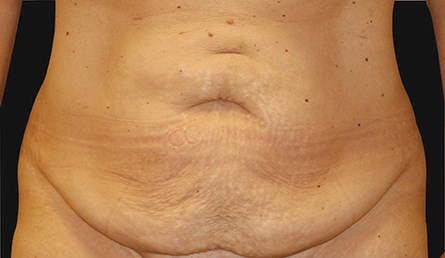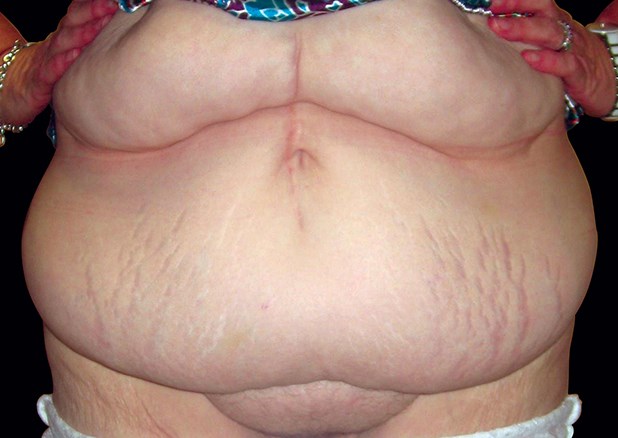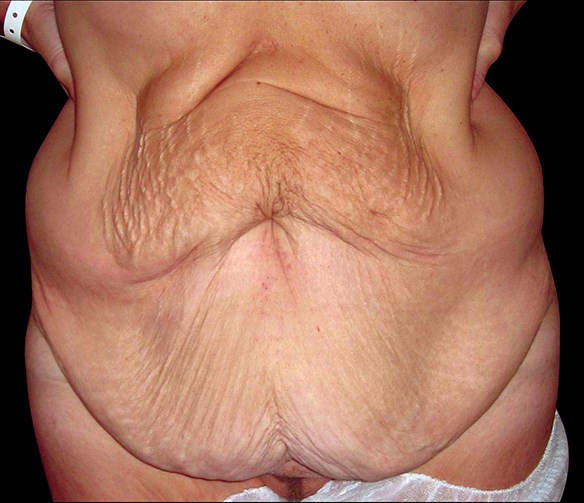There are many different perceptions about what defines the term ‘overweight’. The reality is however that, for many, being overweight is a condition that brings with it significant health and social problems. It is estimated that almost two thirds of all adults in the UK are either overweight or obese and that there are more than two million adults in England with a body mass index (BMI) so high that they would qualify for bariatric (weight loss) surgery under current National Institute for Health and Care Excellence (NICE) guidelines.
With increasingly reliable and safe bariatric procedures, the number of bariatric surgical operations has increased dramatically over the last 10 years and these operations have become established in mainstream National Health Service (NHS) practice. Although bariatric surgery brings with it many health benefits and improves both self-esteem and quality of life, it has the downside of leaving patients with large quantities of loose hanging skin, which can cause considerable distress. This article focuses on the role of plastic surgery in the management of patients who have lost significant amounts of weight either through bariatric surgery or non-surgical weight loss.
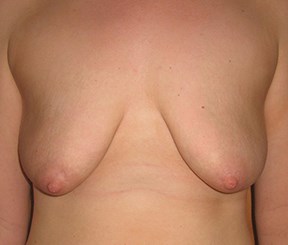
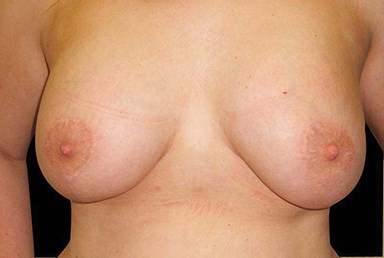
Figure 1 (pre and postoperative): Often following weight loss the volume and shape of the breast changes, making the nipple sit lower than the aesthetic ideal. Using a one-stage mastopexy implant a good result can be achieved. This result is taken at four months postoperatively and the scars have settled down well. This is often the best option for breast rejuvenation following weight loss surgery.
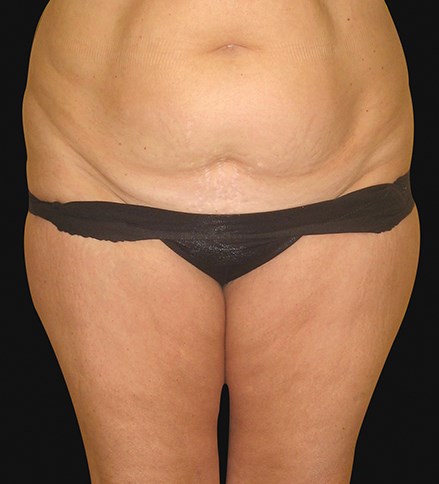
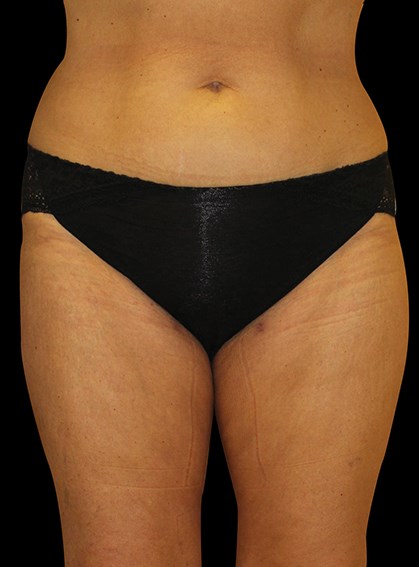
Figure 2 (pre and postoperative): Liposuction only is uncommonly required following weight loss surgery unless there are specific areas of fat that are resistant. In this case liposuction has been performed on the trunk and flanks and hips to improve contour. It requires good skin elasticity to give optimal results.

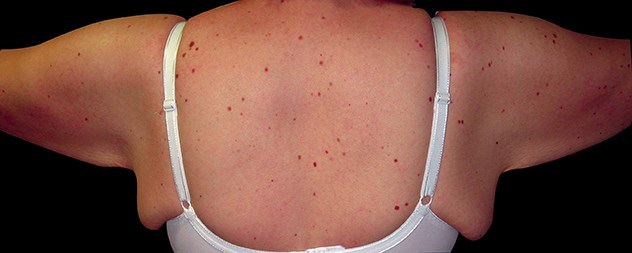


Figure 3 and 4 (pre and postoperative): This lady has had an extended arm lift to remove excess tissue in the upper arms, armpit and the sides of the chest. The scars are placed in such a way that they are difficult to visualise. Often following weight loss this is the best treatment for patients wishing to have arm rejuvenation.
It is often impossible to predict which patients will develop excess skin as a result of losing weight. Concerns about the final appearance after dramatic weight loss may discourage patients wishing to tackle their obesity, even though the distribution of excess skin around the body may be minimal and patients may be happy with the resultant appearance and require no further surgery. However, more often, especially in moderate to severe cases, the excess tissue is not only a reminder of the size they once were but also results in both functional and aesthetic concerns.
“Success is influenced by the patient’s age, and also the size, shape and skin tone of the area to be treated.”
The decision to proceed with weight loss surgery should only be made after the patient has been fully informed about the pros and cons of surgical treatment by a multidisciplinary team (MDT) which carefully assesses the patient’s fitness, preparedness and expectations of surgery. Within the UK there are a number of dedicated bariatric MDTs within both the NHS and the independent sector, who provide on-going support for those who undergo body contouring surgery, for example, Phoenix Health have weight loss clinics throughout the UK and Ireland.
When it comes to considering body contouring surgery, weight stability and a near-normal BMI are two of the most important aspects to consider. Patients should be close to their ideal weight and be weight stable for at least a year prior to considering excision of excess skin or post bariatric weight loss surgery. Any surgical procedure comes with risks and all potential co-morbidities should be optimised prior to any surgery. Smoking is almost always a contraindication for weight loss surgery and where comorbidities can be optimised prior to surgery it is important that these are addressed first.
Patients are strongly encouraged to consult with their GP not only for advice on appropriate referral but also to keep them informed of what is a significant interventional procedure with potential implications on both health and disease.
The consultation and choosing a surgeon / provider
When a patient looks for a plastic surgeon regarding post-bariatric correction it is important to find not only a surgeon but also a team that inspires confidence, trust and a sense of comfort. The team should include specialists who can advise on every aspect of weight loss including nutrition and exercise as well as the technical details of the body contouring surgery. It is important that patients are honest both with themselves and with their surgeon and they must be prepared to undergo psychological screening which may require further assessment. Some surgeons will show preoperative and postoperative images with the caveat that these are just a guide and not a predication and most surgeons should be able to organise informal meetings with ‘satisfied customers’. Consultations for post bariatric surgery are often lengthy but it is an important part of the informed consent process that the risks and benefits and what can realistically be achieved are fully explained but also fully understood. This may take several consultations.
All established surgeons should be able to provide outcome data and numbers of procedures they have performed together with complication rates. In terms of the extended team there should be a physiotherapist, dietician, provision of intensive care on site, dedicated nursing staff and a surgical team that can provide 24/7 cover for the patients. It is a good idea to arrange for a pre-admission visit to the hospital so that patients can feel confident and comfortable that they will be in a welcoming and safe environment.
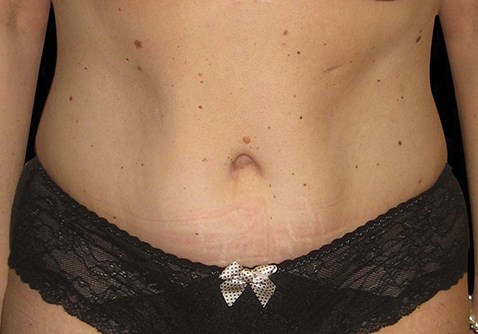
Figure 5 (pre and postoperative): This lady has previously had laparoscopic weight loss surgery. The tummy button has been relocated in one of the previous scars following laparoscopy and the excess tissue has been removed. This has resulted in improved definition of the abdomen.
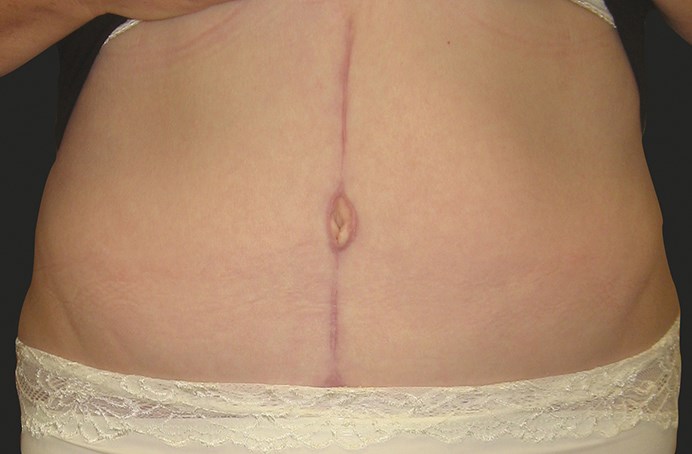
Figure 6 (pre and postoperative): This lady had extensive fat in the upper abdomen and a previous incision in the midline. In this scenario a fleur de lis abdominoplasty can help address this upper fullness and improve the abdominal contour. This is a picture taken after three months and the vertical scar will continue to fade over time. Occasionally this may be required following weight loss surgery.
What can be achieved?
Lack of tissue elasticity results in sagging skin that commonly develops around the face, neck, upper arms, breast, abdomen, buttocks and thighs which can make the body contour appear irregular. Body contouring surgery can reduce the excess skin and fat that is left behind after a major weight loss in any of these areas and improve contour.
What areas can be addressed?
Generally the abdomen is the commonest area that patients wish to have addressed. Options involve removal of overhanging tissue only without relocation of the umbilicus (appronectomy), removal of excess tissue via an incision above the pubic region and relocating of the umbilicus (abdominoplasty) and total body lifting (removal of tissue circumferentially around the body). For weight loss surgery the pros and cons of abdominoplasty, body lifting and fleur de lis abdominoplasty need to be carefully considered. A standard abdominoplasty and apronectomy requires a horizontal scar above the pubis, a fleur de lis abdominoplasty requires the same horizontal scar and a vertical midline scar and a body lift requires a circumferential horizontal scar at waist level. Arm lifting and thigh lifting are also commonly performed to remove excess tissue. Scars in arm lifts often extend from the elbow, into the armpit and down the chest wall. Scars for thigh lifts can be placed in the groin / buttock crease but often skin excess is distributed all the way around the thighs and it is necessary to place a scar from the groin in a vertical nature down to the knee. Scars can be placed below the knee or elbow but this is generally the limit of the extent of scar placement as scars over joints can limit mobility and are not recommended.
For sagging breasts, mastopexy and implant insertion is the most common procedure and is usually performed in one stage. Alternatively implant insertion alone or mastopexy alone may be performed.
Other areas may need to be addressed, especially the upper part of the abdomen, the back and flanks. Furthermore, in excessive weight loss the lower abdomen may need to be addressed in two stages.
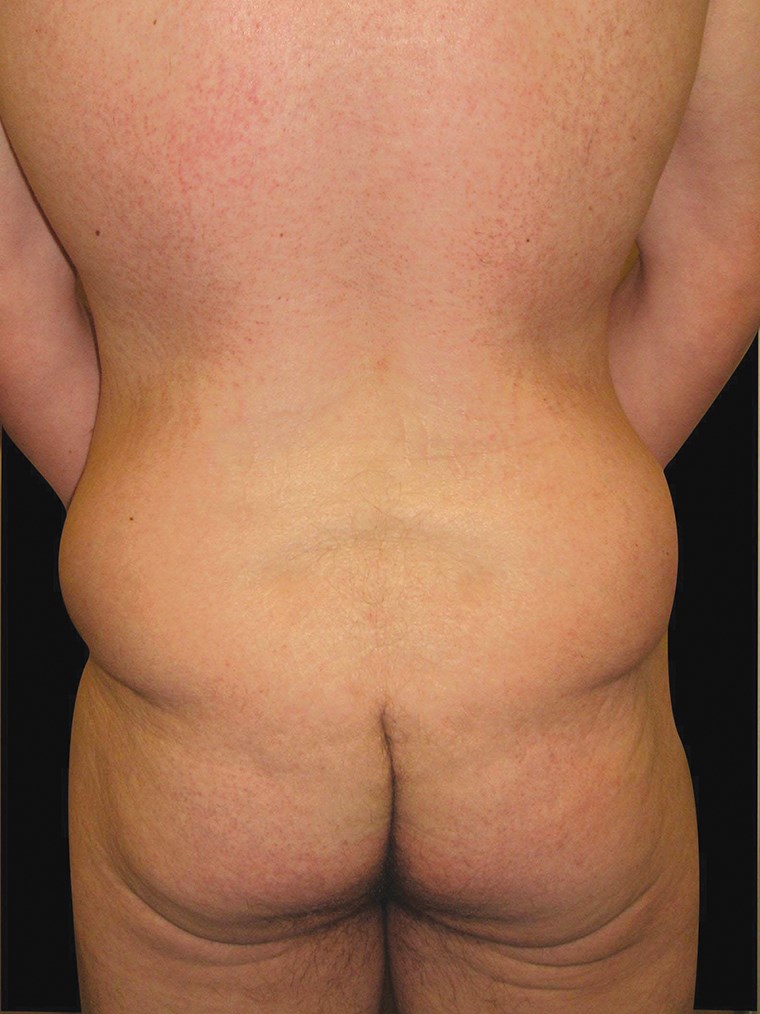
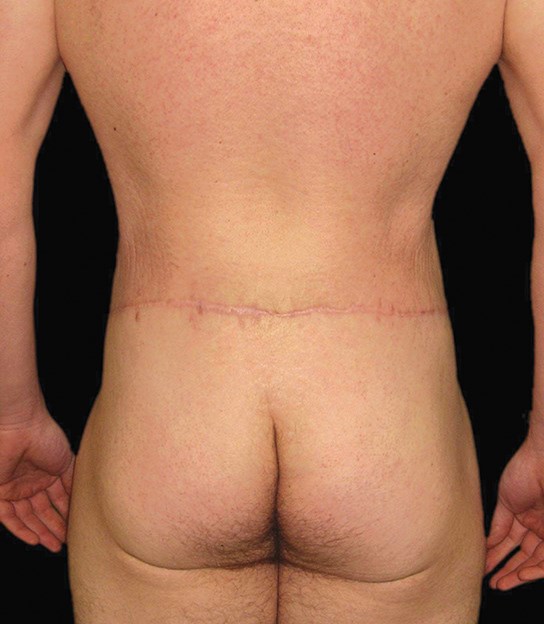
Figure 7 (pre and postoperative): A body lift involves the removal of tissue all the way around the body. It is truly the only way to address the excess tissue around the flanks and buttocks following weight loss surgery. Although a more extensive procedure for patients presenting in this manner, a body lift is the best rejuvenating technique.
Liposuction is often performed alongside removal of excess skin. One common misconception is that liposuction alone can improve the appearance and contour following weight loss. Although this is occasionally possible, liposuction is best performed on patients with isolated fat deposits with good quality skin. This is rarely the case with patients who have excess skin following weight loss and liposuction in these situations can make the appearance worse if not combined with skin excision.
Body contouring surgery must be tailored to the patient’s individual needs and requirements, and treatments must be individualised accordingly. In certain circumstances a combination of operations can be performed. Common combinations for excessive skin excess include total body lifting / arm lift and thigh / breast lift. For women with moderate weight loss the commonest combination is breast lift / mastopexy implant and adbominoplasty. It is important to keep the operative time to a minimum and where time in theatre can be reduced to less than four hours one can avoid the need for a catheter and can decrease the risks of deep vein thrombosis (DVT) and other postoperative complications. This makes mobilisation easier and in my practice I encourage patients to mobilise as soon as possible following surgery.
What should happen postoperatively?
Postoperatively patients should be mobilised as soon as possible and often patients will be placed in compression garments. I personally do not like to use any dressings or drains so that patients can mobilise in the immediate postoperative period. The majority of patients are able to be discharged the day following surgery. All patients are given contact details and a postoperative appointment – usually the week after. I usually advise to keep the wound dry for a week and to avoid driving until followed up in the dressing clinic. I would usually advise taking one to two weeks off work following any surgery and would discourage flying within four weeks due to the increased risks of DVT. All patients are offered open appointments to return at any point following surgery.
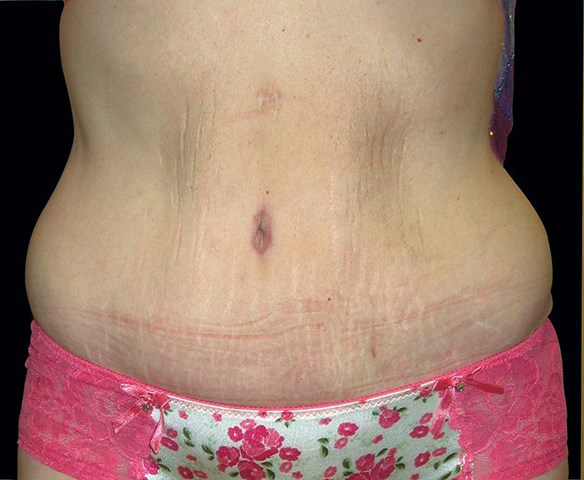
Figure 8 (pre and postoperative): For those with excess tissue all the way round the body that do not wish to undergo a total body lift an extended abdominoplasty can help to rejuvenate the abdomen. It will not address the excess around the flanks and buttocks but can give a dramatic improvement for weight loss patients.
What are the risks?
The complications of body contouring following weight loss surgery must not be underestimated although careful patient selection, preoperative optimisation and efficient postoperative care can limit these complications.
The success is influenced by the patient’s age, and also the size, shape and skin tone of the area to be treated. Some contouring procedures leave only small, inconspicuous scars but more often than not more noticeable scars are necessary to achieve a desired result. Most patients find these scars acceptable and enjoy greater self-confidence. The scars do start off red and it takes a number of months for the scars to settle. All patients are encouraged to massage the scars once the wounds have healed which helps the scars become pale and softer. Massage also helps manage the local tissue swelling which always occurs following surgery. This can take from weeks to months to settle following surgery. Pain is almost always inevitable following surgery and this varies between patients. Generally the most uncomfortable part of any body contouring surgery is tightening of the muscles of the abdomen which is often necessary in abdominoplasty and body lifting procedures. Sensation does change following weight loss surgery. Although most sensation returns there are no guarantees that this will be the case and occasionally there are areas where sensation does not fully recover.
With all surgery there are risks of bleeding and infection and especially in weight loss surgery there are risks of the build-up of serous fluid called seroma. Occasionally patients may have to return to theatre, although this is uncommon. For all weight loss surgery there are risks of the wounds breaking down or dehiscing. If this does occur it can take weeks to months to heal depending on the extent. It is imperative that surgeons with appropriate experience perform this surgery and patients are realistic about what can be achieved. It is much easier to revise or remove extra skin at a second stage than treat a dehisced wound.
Declaration of competing interests: None declared.

